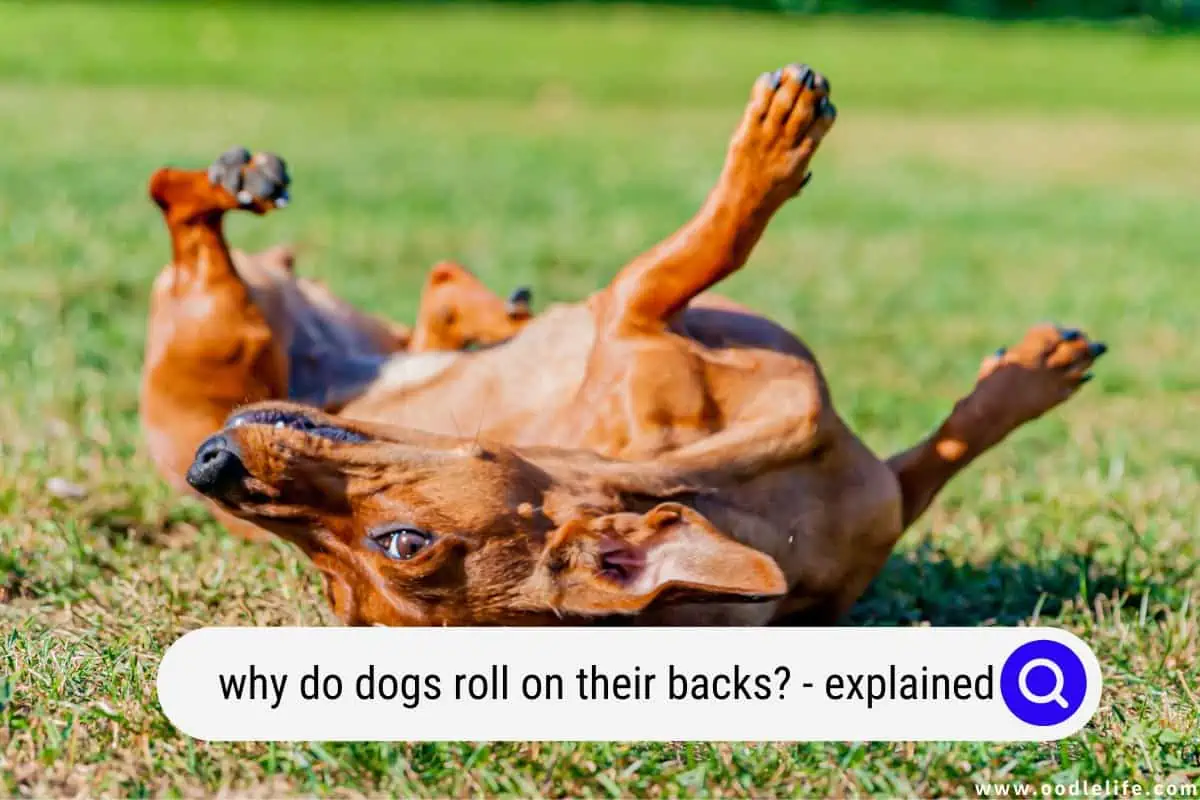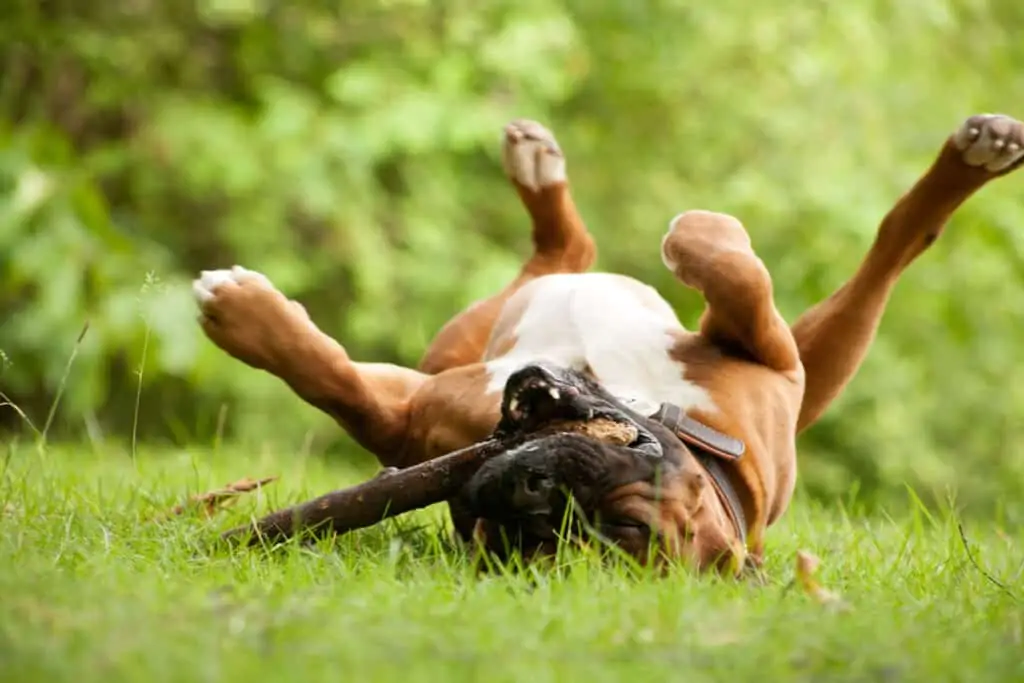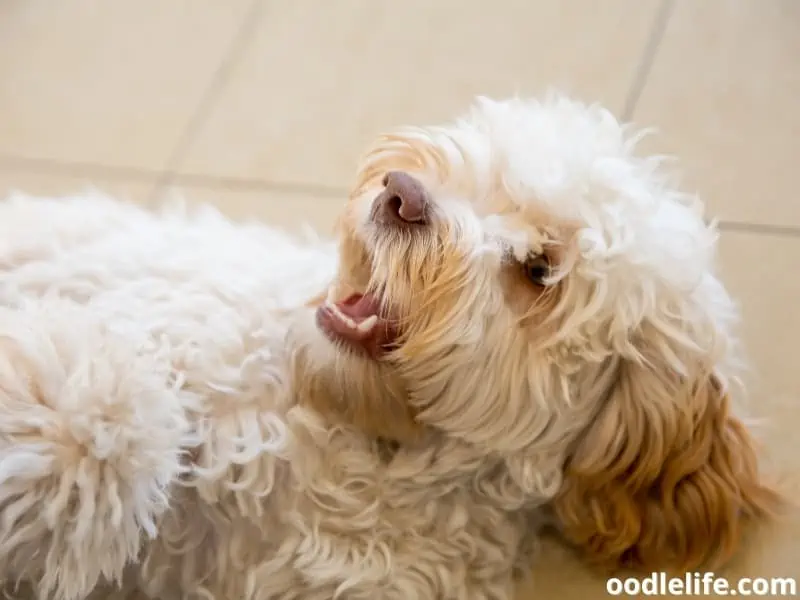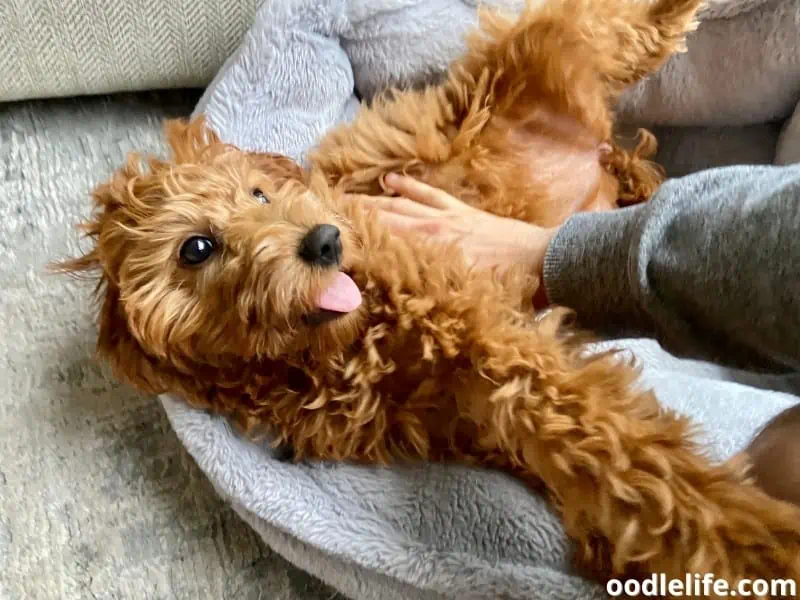Why Do Dogs Roll On Their Backs? (Explained)
Have you ever seen your dog roll on its back, exposing its belly to the world? It’s an adorable yet puzzling sight. A dog rolling on its back may seem odd, but several explanations exist.
In most cases, the behavior is no cause for concern, but there are some signs to watch out for. Your dog may have an allergy or skin problem. You can learn much about your dog’s mood and what they want by observing when and where they roll on their back.

So, if you’ve been wondering, why do dogs roll on their backs? Keep reading to find out more.
Reasons Why Dogs Roll On Their Backs
Dogs are lovely creatures with diverse behaviors that can be either perplexing or humorous to humans. Here are some possible explanations for why dogs roll on their backs:
To Relieve Itchiness
An itchy back is the most prevalent reason dogs roll on their backs. As the dog’s paw might not reach that far, they roll over to relieve the itch by scratching their back on the ground. While most people regard the behavior as normal, it may be cause for concern if your dog constantly lies on their back.

Your dog may have some skin infection, an allergy, fleas, or ticks. The skin infections might be uncomfortable and progress quickly, so if your dog happens to be a victim, you should contact your veterinarian as soon as possible.
Some medications can assist in relieving your dog’s itching and help treat any bacterial infection that might already be present. Canine allergies present themselves through anal gland infections and ear infections.
If the rolling becomes frequent, your dog could react negatively to something in the surroundings or food. That’s especially true if they do so while chewing their paws, scratching their ears, or scooting.
They Want To Mask Their Scent
Dogs will occasionally choose a specific location to roll over. One possible explanation for such behavior is that they wish to cover their entire body in a scent that will last longer. They might also want to wash off any foul odors they’ve picked up.

Furthermore, your dog may be seeking to mask their smell. Their canine predecessors, particularly the wolves, employed this tactic when hunting. The behavior is prevalent in outdoor dogs.
They can cover up their natural scent by rolling in dirt and grass and blend into the environment better.
They Want a Belly Rub
Another reason why dogs roll on their backs is to solicit a belly rub. Dogs love the sensation of having their stomachs rubbed and scratched, so they’ll often roll onto their backs to get some attention. The behavior is prevalent in puppies, but adult dogs will enjoy a good belly rub just as much.

If you notice your dog rolling around and showing off their belly, it may signify that they’re asking for a belly rub. If you have the time, a few gentle scratches and rubs make them happy. Just stop if they appear to be uncomfortable or show any signs of distress.
They’re Showing the Submission
It’s universally known that when a dog rolls over onto their back, exposing their belly, it’s a show of submissiveness. They’re simply attempting to pass a message that means no harm. If you have a shy dog, the behavior might be accompanied by submissive peeing.

Furthermore, when confronted by a dog they consider superior, a lower-ranking dog may stoop, flop, and avoid establishing eye contact. The dog will likely roll on their back to show the dominant dog that they mean no harm.
It’s best to refrain from patting a nervous dog’s belly because you risk eliciting a defensive bite. Instead, use a positive tone to reassure your dogs, and then praise or treat them when they willingly assume the sit position.
Studying your dog’s other non-verbal behavioral cues, they might be exhibiting and being mindful of the surroundings can help you determine whether it’s a genuine submissive back-roll.
If your dog lacks proper socialization or is still wary of strangers and unfamiliar situations, a roll on its back might be nothing more than an attempt to seem friendlier.
They’re Saying Hello to You
When they want to say “hello” to their owner, dogs will roll on their back as they do after seeing another dog.

For instance, you won’t observe this behavior when you take your dog to a veterinarian’s clinic. Instead, they will bend down low and shield their bellies and private parts. Tail wagging and butt wiggling are telltale signs that your dog’s back rolling isn’t malicious.
During Playtime
Dogs often relax by rolling on their backs while playing with other canines. It’s a sign that they’re in a jovial mood. They do this to protect themselves from their playmate’s bites.

Moreover, dogs often roll on their backs as a sign of wanting to engage in playtime activities. The behavior might be your dog’s invitation for you to join in the fun.
They Want To Cool Themselves Off
Since dogs only have a few sweat glands, they rely on panting to keep their bodies comfortable. Dogs can reduce body temperature by rolling on their backs as they position their belly. You’re more likely to notice this behavior during summertime when the temperatures are high.

They’re Signaling Relaxation
Dogs may roll on their back to show they’re comfortable and content. You’ll often observe this behavior when your dog is lying on a plush blanket or in a sunbeam.

What To Know About Petting a Dog Who Is on Their Back?
When assessing whether or not your dog is trying to invite you to pet them when rolling on their back, concentrate on their language. As a standard rule, when your dog rolls over to greet you, you should give them a few pets and then refrain.

Check if they put more pressure on you to do more, paw at you for more petting, or try to get away from you.
You should also avoid surprising your dog when they’re not expecting it, such as when they’re asleep. Ensure the dog is comfortable with you before proceeding. When petting, use light strokes and keep your hands flat.
Avoid using long, hard strokes or anything that might feel overly intrusive to the dog. When they begin to squirm, lick their lips, or yawn, these are signs that they’re uncomfortable or anxious, and it’s best to stop petting them.
Some dogs might roll on their back in a more defensive stance, growling, or even showing teeth. If that occurs, back away immediately.
Should I Be Concerned When My Dog Rolls On Their Back?
Rolling onto their back is a natural behavior for dogs, so there’s usually no need to be concerned. They exhibit the behavior for various reasons, including:
- When marking their scent
- Relieving itchiness
- Having fun
- Showing submission
However, if your dog rolls onto its back in certain situations, it may indicate an underlying problem. For instance, if they roll onto their back when confronted by another dog, it shows submission or fear. It may also signify that your dog is uncomfortable and trying to defuse the situation.
If your dog regularly rolls onto its back when in unfamiliar settings or when meeting new people or other dogs, you may want to take them to the vet to rule out any medical issues or to see if they need more socialization.
Why Do Dogs Roll On Their Backs After a Bath?
Your dog rolls on its back after bathing because they want to stay dry and warm. In addition, they are attempting to have the original scent back after cleaning them. You will notice your dog rubbing against carpets and furniture in such cases.
Final Thoughts
Why do dogs roll on their backs? Dogs rolling on their backs is a common behavior, and there can be many reasons why they do it. It could be as simple as wanting a belly rub or trying to relieve itchiness.
Either way, it’s essential to recognize any accompanying signs.
If your dog starts rolling on their back more often than usual, it’s best to speak to your vet about potential causes and treatments. Furthermore, it would be best to be cautious when petting a dog rolling on its back. We hope our article has helped answer the question, why do dogs roll on their backs?